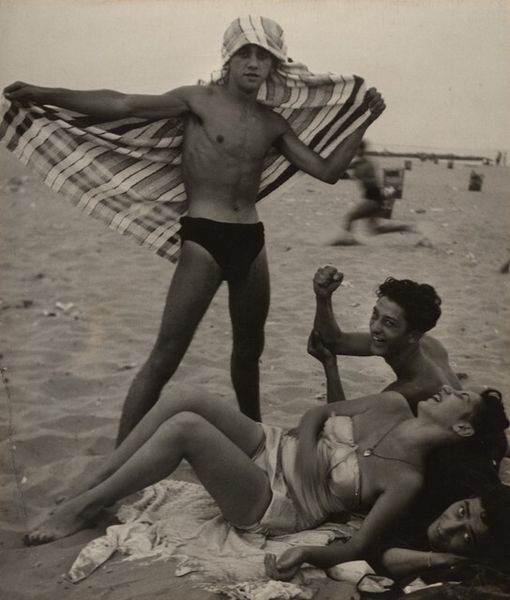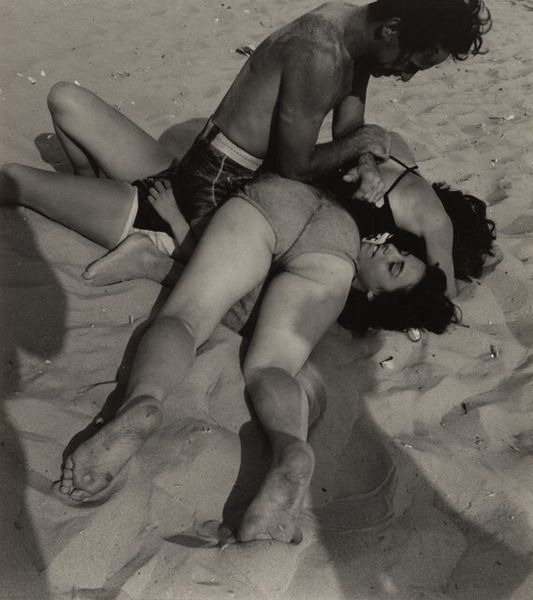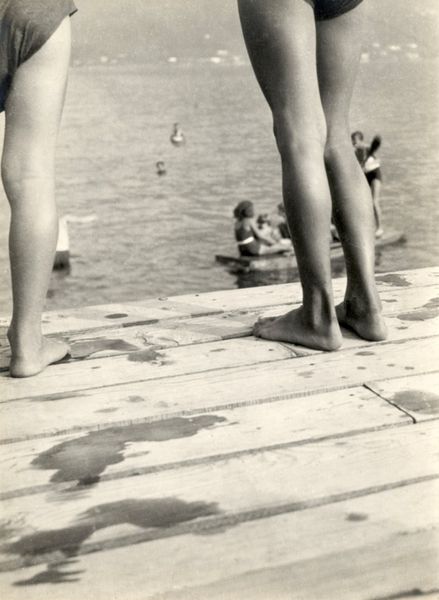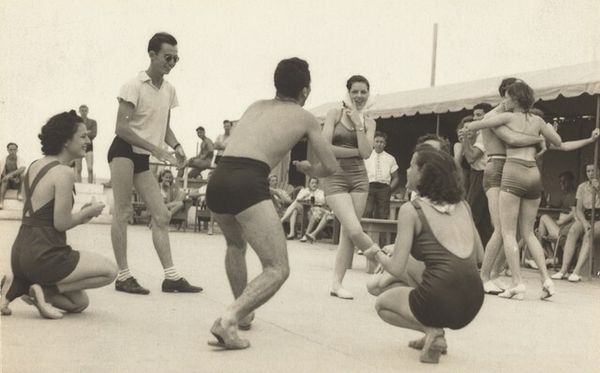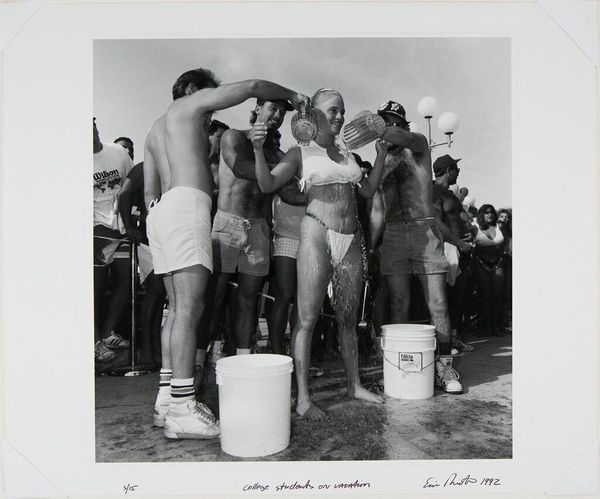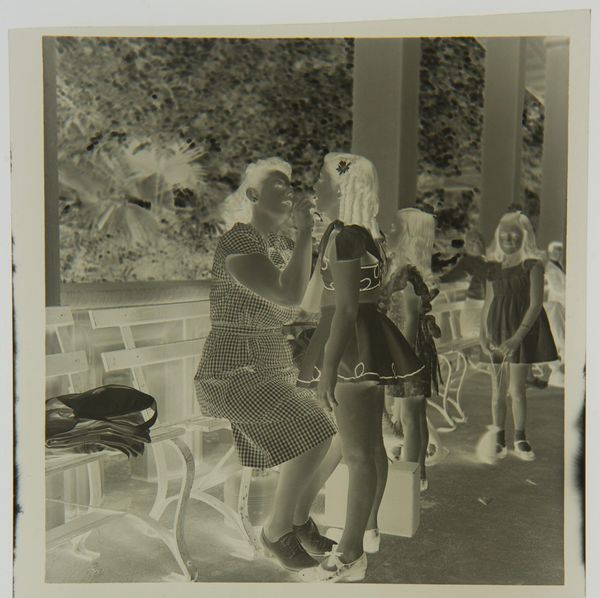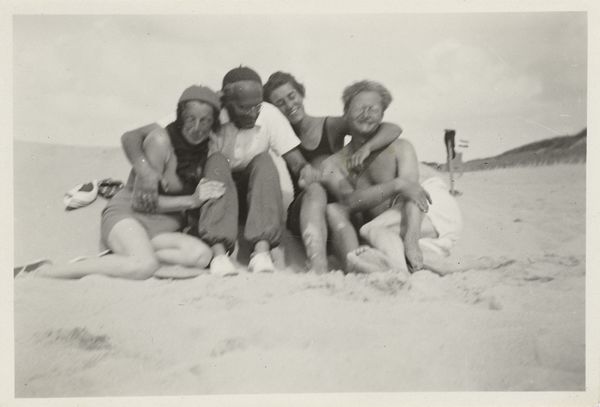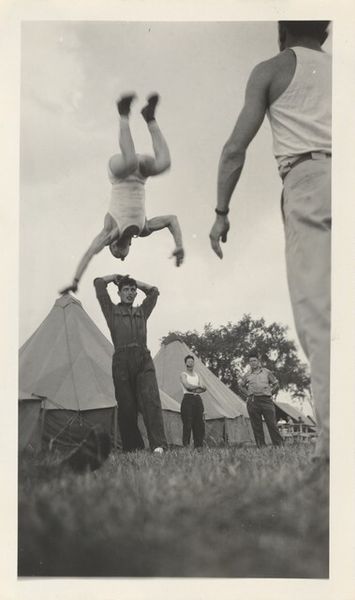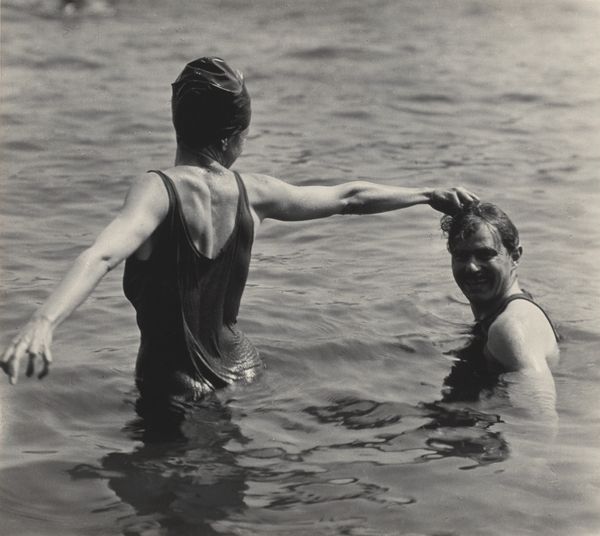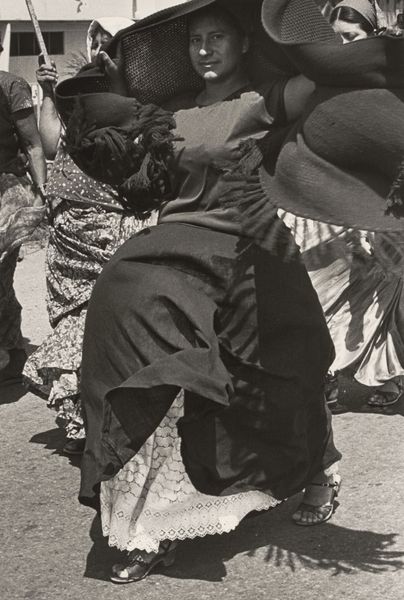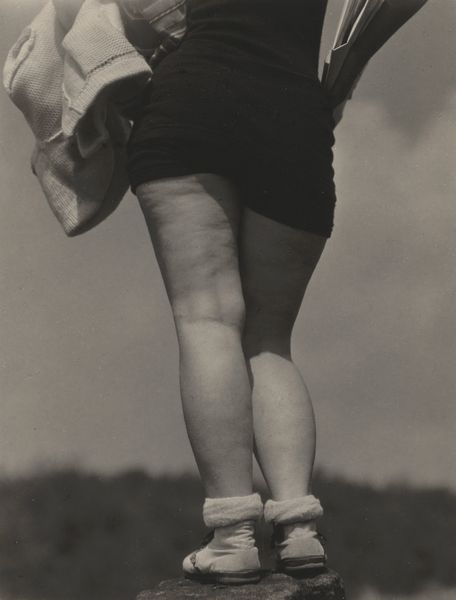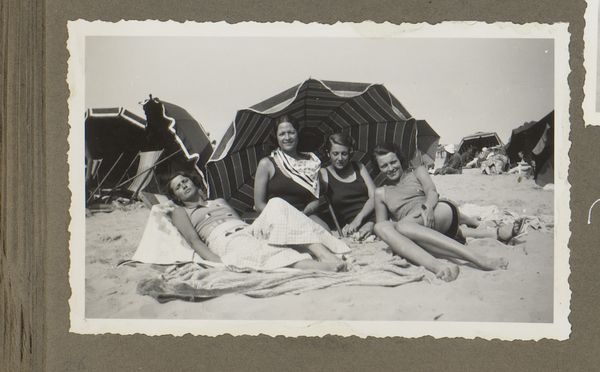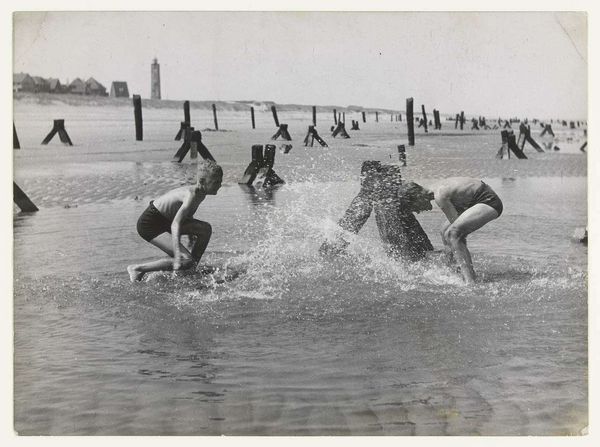
Dimensions: image: 19.9 × 20 cm (7 13/16 × 7 7/8 in.) sheet: 25.1 × 20.1 cm (9 7/8 × 7 15/16 in.)
Copyright: National Gallery of Art: CC0 1.0
Editor: This gelatin silver print, "Coney Island, New York," was created by Sid Grossman between 1947 and 1948. The tightly packed figures create such an intense feeling of both intimacy and anonymity. How would you interpret this work? Curator: Notice how Grossman frames the scene. It's almost aggressively close, focusing on the texture and shapes of the bodies themselves. The image plane is densely packed; this is what gives it its visual tension. There’s little depth of field, minimizing the landscape and emphasizing the immediate forms. The grayscale emphasizes tonal contrast. Editor: That's fascinating! The focus on form over traditional compositional elements is very apparent. What purpose do you think this technique serves? Curator: It compels us to consider the work beyond the narrative of people at the beach. It's about the shapes, the juxtaposition of light and shadow, and how these formal elements communicate a certain rawness, an immediacy. Think about the way his cropped compositions deny any sense of depth of field. How does that limit or guide the viewers interpretation? Editor: By flattening the perspective, it pushes the human element forward, making it unavoidable. It’s not just about people at the beach; it is *about* the human form and its relationship with itself. Curator: Precisely. Consider the lack of posed subjects, we become observers not of an event, but an arrangement of abstract sculptural masses, each one made real by Grossman's attention to contrast and the subtleties of the silver gelatin print. Editor: I’ve never considered realism in such an abstract way. Thanks for highlighting how the material presentation interacts with our perceptions of form.
Comments
No comments
Be the first to comment and join the conversation on the ultimate creative platform.
